
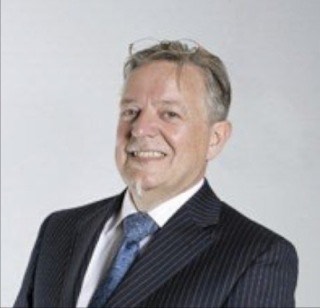
Ik zal me even voorstellen, mijn naam is
Gerard-Jan de Brieder Sr., ben geboren in ’s-Gravenhage op 4
mei 1954.
Heb me altijd geconcentreerd op uitdagende IT-processen.
Heden gepensioneerd, nog steeds actief voor de samenleving op
vrijwillige basis.
Ik heb een eigen bedrijf “Key-Engineering” gehad, welke
gespecialiseerd is in IT-ontwikkelingen.
Ik heb voor mijn werk als project manager, veel gereisd naar diverse
locaties in Europa en Saoedi-Arabië en daar weer verschillende grote
IT-projecten mogen uitvoeren.
Ik ontwerp in mijn vrije tijd, als Hobby website’s, zoals u ook ziet
aan deze site.
Deze is geschreven met PHP, HTML, CSS, Javascript SQLite en het
pakket Rapid Weaver, waar ik al wat jaren ervaring in heb.
Verder begeleid ik mensen in de digitale Apple-wereld, daar het
steeds moeilijker wordt voor 55+ers die geen ervaring hebben in de
digitale wereld, om nog contact te krijgen met instanties zoals;
zorgbedrijven, belastingdienst, gemeentes en andere bedrijven.
Kom gerust eens langs, voor een informatief gesprek als u hier
behoefte aan heeft.
| Company: | From: | Until: | Role: |
|---|---|---|---|
| Key-Engineering | 2009-08 | Heden | Founder / Owner |
| Migration Match | 2009-02 | 2008-05 | Migration Manager |
| Sabbatical | 2007-05 | 2008-05 | My self |
| Raet b.v. | 2001-09 | 2007-04 | Manager BU Operations |
| Company: | >From: | Until: | Role: |
|---|---|---|---|
| GBS | 2000-08 | 2001-08 | Manager BID |
| "Euro2000 | 2000-02 | 2000-07 | Manager IT |
| KLM Cargo | 1999-06 | 2000-01 | Manager Migration |
| KFN | 1999-04 | 1999-05 | Project leader |
| ING Clearing | 1998-11 | 1999-04 | Project leader |
| Ministry of Justice | 1998-04 | 1998-10 | Project leader |
| Shell | 1997-09 | 1998-03 | Project manager |
| Electric Engineering | 1996-07 | 1997-08 | Manager IT |
| GSO (intern) | 1996-01 | 1996-06 | Mentor / Trainer |
| Stichting Maatwerk | 1994-09 | 1995-12 | Manager IT |
| Unisource Business Network | 1994-07 | 1994-09 | Senior netwerkspecialist |
| SNT | 1994-06 | 1994-06 | Senior netwerkspecialist |
| BAC (belastingdienst) | 1994-01 | 1994-05 | Systeem Disigner |
| UBN | 1993-02 | 1993-12 | System Advisor |
| BAC (belastingdienst) | 1992-09 | 1993-01 | Senior Consultant |
| PTT | 1991-01 | 1992-08 | Systeem Advisor |
| NAM | 1990-06 | 1990-12 | Netwerk communicatie specialist |
| VNU-TUM Antwerpen | 1989-10 | 1990-12 | Netwerk specialist |
| NMB (ING) | 1988-09 | 1989-09 | Netwerk specialist |
| Key Engineering | 1988-06 | 1996-01 | Eigenaar (Directeur) |
| Description: | Ends: | Training organization: |
|---|---|---|
| Management training | 2002 - 2006 | Getronics Amsterdam |
| Prince 2 Practitioner | 2001 | Getronics Amsterdam |
| Prince 2 Foundation | 2000 | Getronics Amsterdam |
| Projectmanagement PM2 | 2000 | Haagse Hogeschool |
| English trade-contracts | 1998 | Regina Coeli |
| Projectmanagement PM1 | 1995 | Haagse Hogeschool |
| Sales training | 1992 | Getronics |
| System management | 1987 | Getronics |
| Broadband network management and Security | 1991 | Ungermann-Bass (Brussel) |
| OS/2 LAN management | 1990 | Computrain |
| OS/2 System management | 1990 | Computrain |
| OS/2 Basic | 1990 | Computrain |
| Electrical designer Computer Vision system (CAD) | 1985 | Fokker |
| Electrical designer Applied Dynamic system (CAD) | 1981 | Rietschoten & Houwens |
| Electrical designer Calma-system (CAD) | 1977 | RVO-TNO |
| Training direction: | End: |
|---|---|
| MEAO Bookkeeping (evening-school) | 1984 |
| MTS E (Evening-school) | 1978 |
| Millitaire service M109 howitzer underofficers training Artillerie 't Harde Oldenbroek | 1974 |
| MTS E | 1972 |
| LTS E | 1970 |
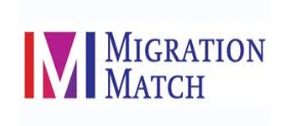
I followed an internal training “M3©”, the method developed by
Migration Match, to achieve a successful migration of ICT.
With our team, I wrote as "Consultant / Migration Manager", an
action plan for the migration of the ICT from Heijmans.
I also wrote a presentation in PowerPoint, to explain to the
managers of Heijmans-Infra, how we want to migrate the ICT.
Last but not least, I wrote an action plan for the Migration
managers.
Next, together with the IM and ICT-ers from Heijmans, I wrote an
action plan for the department Infra. My plan is being implemented
by a younger colleague.
For the internal back-office of Migration Match, I wrote an action
plan to organize the process-stream of new staff member.
I also make a list of the inventory, from everything what a staff
member needs to use by doing his job, by example his Laptop, Car,
Telephone, software, SLA by third-party contractor and so on.
By doing so, the back-office became to be structured and the SLA's,
and cost could be controlled.
I find this a very fine experience and I learned much for further
migrations.
By applying a structured method that specifically focuses on the
preparation of migrations, that complexity can be controlled, both
in the elapsed time and in costs.
No other approach has proven to be as effective as M3©.
Primarily M3© is a management method that doesn’t particularly say
anything about the way the specialists need to do their job, it
does say something about what and when.
Specialists are autonomous in their job and are managed on output
within M3©.
Results are being submitted to joined quality inspections during
the complete migration process.
Practical management that focuses on your desired result with the
help of several measuring moments that keep a close watch at the
progress of your project. M3© should be used for every migration
project.

As Business Unit manager Operations (directeur Operations), I
was responsible for the monthly production of 3 million payslips a
month. this was thirty percent of the total marked for this kind of
production.
I was responsible for the availability of computing capacity at the
mainframe by PinkRoccade.
I was directly responsible for 24 employees and the production
manager, three different production groups to handle 3 different
salary packages, a system management group and indirectly the
production group from PinkRoccade.
The assignment was:
◆ Daily control concerning the operation and management
◆ Lower the production costs
◆ Reorganize the production flow
◆ Set up a system management group to control the outsourced work at
PinkRoccade.
◆ Phasing out all manual productions
◆ Give a tour for customers to understand the production of payslips
and the control stream to send the salary slips to all the
employees.
The daily employee management consisted of:
◆ Progress meetings
◆ Conducting evaluation interviews
◆ Planning of training courses
◆ Making assessment calls
The daily activities consisted of:
◆ Analysing technical production processes
◆ Indicating improvements in the production process
◆ Motivating the team for team challenges
◆ Making the planning for the production
◆ Making of the schedule for implementing software changes in the
production stream
◆ Tracking Stocks
Lastly, I was working on the "Outsourcing" of the production
department.
I did make an investigation by several companies with the question
:
✓ Are they equipped to carry out a safe payslip production?
✓ Do they have enough computer power to handle such a complex
process?
✓ Are they able to handle such large volumes of mail"?
With my team, I did produce a good manual with all facts from the
production. So that later on we could transfer the production to
PinkRoccade, without problems.
I bring my advice to the new Investor of Raet in report form.
Raet did not need my knowledge and experience anymore, so I did say
goodbye and I take a sabbatical.
It was a very challenging job and I did it with pleasure.
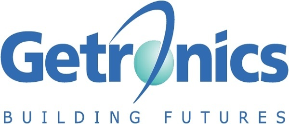
Bid Management is interesting for companies who been confronted with
complex European tendering.<
Getronics is such a company.
It goes about tendering to european companies, this brings a lot of
complex administrative processes for a company who like to sale
there expertise in an international rival arena.
On front of the international rivals, you must select your strong
and unique points to win the tendering.
My "Bid Management" expertise are:
◆ Brainstorm over the best answers for the tender, with a small team
of sales and specialists out of the organization.
◆ Think about the best solutions, the most distinctive responses and
how to display this in a quotation.
◆ Coordinate the quotation process.
◆ Writing the quotation.
◆ Advise about European tender rules and how to act specific tender
processes.
◆ Proper consultation with legal counsel on text and content.
The point is, to score as many points on the responses to a
winning bid down.
Caring for the implementation of the quotation and competitive
rates should be decisive!
Collect data from old projects, where the question is:
◆ Customer name
◆ Do we have a good description of the contract
◆ Were we succeeded for the assignment?
◆ Does the client willing to contribute to publishing this
information.
◆ What were the costs of this project?
◆ What was the throughput in time?
◆ What were the challenges?
◆ What were the costs of the quotation?
◆ Can we use the information for other projects?
Making a logical structure into the database.
The goal was to find the data in record time for the sales and
account managers to produce a quotation for a next tender.
I did learn from this project to understand how an international
tender grew to a successful quotation.
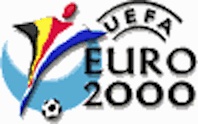
Project EURO2000 from UEFA, is the european football championship in
the year of 2000 which is held every four years and organized by
UEFA.
This european championship were co-hosted by Belgium and the
Netherlands between 10 juni and 2 july 2000.
The final tournament was contested by sixteen nations.
The contests were divided over eight stadiums in the Netherlands and
Belgium those were Amsterdam, Rotterdam, Arnhem and Eindhoven in the
Netherlands and Brussel, Luik Brugge and Charleroi in Belgium.
Getronics was chosen as contractor for the ICT, I was selected for
the function of ICT-manager at "De Kuip" stadion Rotterdam.
The collegiality and atmosphere between the ICT-managers was very
good, we were very helpful to each other to achieve our goals.
In total we have 60 servers, 700 PC's, 250 printers to manage,
divided over 35 locations.
As ICT-manager, I was responsible for:
◆ ICT operation located in AHOY Rotterdam, Hilton hotel, Sport-hall,
Accreditation-centre, Stadion, and Reporters-center.
◆ I was responsible for the availability of ICT-network with
printers, scanners, copiers, faxes, and the Internet.
◆ I was directly responsible for 20 employees.
◆ I was member of the Management Team.
The assignment was:
◆ Daily control concerning the operation, planning and
management.
◆ Checking the work on locations and testing the connections.
◆ Building the ICT infrastructure on several locations.
◆ Set up the help desk on location.
◆ Employee planning on locations.
◆ Daily problem management and change management.
The daily employee management consisted of:
◆ Progress meetings
◆ Problem management
◆ Conducting evaluation interviews
◆ Planning
With my team, I succeeded in our assignment.
It was a unique experience and a very challenging job, I did it
with pleasure.

I was responsible for a few locations in the process too rollout the
Enterprice highway in offices from KLM Cargo on the airports.
Everyday, I was responsible to have employees on place were we want
to work out the new blueprint.
Inside the design of the blueprint from the Enterprice-highway,
there were the instructions to replace the SDLC connections to
ethernet connections.
The work consist of:
◆ Replacing equipment and remove the old ones.
◆ Making new cabling into the offices of KLM Cargo.
◆ Testing the new equipment on functionality.
◆ Testing connections over the network.
I had the challenge to send my equipment from Amsterdam to the
airports on other office location from KLM Cargo.
Also I had the responsibility to remove the old equipment and send
them back to Amsterdam.
I did most of the work by telephone at the office in Amsterdam
Schiphol.
Sometimes, I did go to the location like Abu Dhabi,
Dusseldorf and Frankfurt to watch the planned
workout.
The assignment was:
◆ Daily control, concerning the operation to send equipment to
offices from KLM Cargo on other airports.
◆ Rent employees on place and place the equipment and install
cabling for the networks.
◆ Planning the work for the configuration of equipment at Amsterdam
in time, to send this equipment to the offices on other
locations.
I succeeded in all the assignments.
It was a very challenging job and I did it with pleasure.
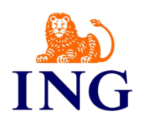
As Technical Project-leader,
I was responsible for the ICT hardware ICT software
infrastructure
Backup systems.
This must be checked on reliability, to go from the year 1999 to
2000.
My work consist of:
◆ Making an inventory of software.
◆ Making an inventory of hardware.
◆ Testing the hardware (PC's, network equipment, servers) for the
millennium transfer.
◆ Testing the software for the millennium transfer.
◆ Testing the infrastructure (Modems, Hubs, Patch cabinets ) for the
millennium transfer.
◆ Testing backup equipment for the millennium transfer.
◆ Making a list for hardware replacement
◆ Making a list for software replacement or give advice for another
software product.
◆ Planning the millennium tests.
◆ Emulating the millennium transfer and making a list of challenges
to overcome.
◆ Making process descriptions to hold the compliantly for the
millennium transfer.
◆ Freeze software packages at a certain date, to make guarantees for
the millennium transfer.
◆ Setting up procedures to hold the situation stable.
◆ Making "risk analyses", to find out how to handle, when things
don't went as you try to predict.
◆ Writing out scenarios about possibilities.
◆ Coaching staff for further action.
I succeeded in all the assignments.
It was a very challenging job and I did it with pleasure.
From 09-1988 until 09-1989, I did a project "Electronic banking"
for customers of NMB with success.
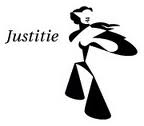
As Technical Project-leader, I was responsible for the hardware,
software, infrastructure and backup systems.
Project-name: HBS (Hoger beroep systeem).
The assignment for our team was:
To initially develop a work flow for the process of H.A.S. (Higher
Appeal System).
We did use the software "Staffware" to design a process stream for
the "higher appeal cases" through "traffic violation" and "cash
flow" processes.
My work consist of:
◆ Building the infrastructure for the software design team
◆ Installing the software for the designers.
◆ Direct assist of the design team
◆ Making images from a complete configured PC with Windows '95 and
the software from "Oracle" and "Staffware".
◆ Configuring a "NT" fileserver
◆ Making an images of all possible different systems (with
"Ghost")
◆ Writing procedures to install new equipment with an image.
◆ Give the assignment to configure a "O-VM server".
◆ Protocol TCP/IP met client server SQL
◆ Install RAS (Remote access server)
◆ Making an inventory of hardware.
◆ Testing the hardware (PC's, network equipment, servers).
◆ Testing the software
◆ Testing the infrastructure (Modems, Hubs, Patch cabinets, RAS )
◆ Testing backup equipment for reliability of information
◆
◆ Making process descriptions for day to day operations and
management of Ministry of Justice ('s-Hertogenbosch)
◆ Coaching staff for further action.
◆ Making safety procedures for communication over modems.
◆
◆ Facility management
I succeeded in all the assignments.
It was a very challenging job and I did it with pleasure.
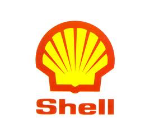
As Project manager, I was responsible for implementing of a new
standard workplace.
This new standard workplace was designed by Shell laboratories.
My work consist of:
◆ I did select hardware specialists (3FTE) for configuring and
installing the hardware.
◆ I did select software specialists (2FTE) for installing the
software
◆ I did select a Transporting company, to do the transport of
hardware to and from Shell offices and training centers.
◆ I did select employees (5FTE) for placing equipment on the
locations
◆ I did select 2 specialists for problem-solving after the
rollout.
I did design a process in a factory setting, for rolling out the new
workplace to the office locations.
We did develop an image to install a standard workplace from a
fileserver
An image is a foto of the complete environment for the standard PC,
which include: the Operating System, Office software, Mail,
communication software etc.)
We tested the software to roll out the workplace
Building the infrastructure for the software design team
◆ Installing the software for the designers.
◆ Direct assist of the design team
◆ Making images from a complete configured PC with Windows '95 and
the software from "Oracle" and "Staffware".
◆ Configuring a "NT" fileserver
◆ Making an images of all possible different systems (with
"Ghost")
◆ Writing procedures to install new equipment with an image.
◆ Give the assignment to configure a "O-VM server".
◆ Protocol TCP/IP met client server SQL
◆ Install RAS (Remote access server)
◆ Making an inventory of hardware.
◆ Testing the hardware (PC's, network equipment, servers).
◆ Testing the software
◆ Testing the infrastructure (Modems, Hubs, Patch cabinets, RAS )
◆ Testing backup equipment for reliability of information
◆
◆ Making process descriptions for day to day operations and
management of Ministry of Justice ('s-Hertogenbosch)
◆ Coaching staff for further action.
◆ Making safety procedures for communication over modems.
◆
◆ Facility management
I succeeded in all the assignments.
It was a very challenging job and I did it with pleasure.
I start working in 1972 and that is now for almost 40 year.
In 1988 I Decided to work for Getronics in posting contracts.
The last 10 years, I was manager at several companies.
The latest Job, I was B.U. manager at Raet b.v.
I had a very hard job to "outsource" the production department.
This job means at the end, that my function wood not exist anymore
and most of my staff went into retirement.
When I finished my assignment, I decided to have a sabbatical and
goes around with my MX5 through Belgium, Germany, Luxembourg and
Austria.
In that period I was thinking about other assignments and how to
change this for the last 10 years?
Also I was studying some new topics like HTML, CSS, PHP,
Javascript and Rapid Weaver web-sites.

Per keuze is er:
- een keuze toets (zilverkleurige toets)
- een beschrijving van de functie die het programma uitvoert.
Via een muisklik op de toets activeert u het programma.